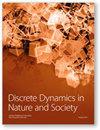Recycling Mode Choice in a Textile and Apparel Closed-Loop Supply Chain considering Blockchain
IF 1.2
4区 数学
Q3 MATHEMATICS, INTERDISCIPLINARY APPLICATIONS
引用次数: 0
Abstract
The development of the textile and apparel (T&A) industry has led to an increasing focus on recycling used products. Remanufactured product quality raises consumer concerns, and blockchain can effectively solve this problem. We establish a closed-loop supply chain (CLSC) in which a manufacturer, a retailer, or a third-party recycler collects used T&A products to examine the most efficient recycling mode with and without blockchain and the impact of blockchain on CLSC decisions. The results show that (1) if the manufacturer’s recycling cost coefficient is relatively low, used T&A products are collected directly by the manufacturer. Otherwise, the responsibility for recycling used T&A products falls to the retailer or the third-party recycler. It is noteworthy that the manufacturer’s choice of recycling mode remains unchanged whether a blockchain is implemented or not. (2) The implementation of blockchain by the manufacturer and the retailer can increase profits and consumers also benefit when the cost of validating blockchain units remains below a certain threshold. (3) When the recycling cost coefficient exceeds a certain threshold, the implementation of blockchain increases prices and recycling rates. These findings offer CLSC members’ management insights into how to select the optimal recycling mode and the consequences of implementing blockchain.考虑区块链的纺织服装闭环供应链中的回收模式选择
纺织品和服装(T&A)行业的发展使人们越来越关注废旧产品的回收利用。再制造产品的质量引起了消费者的担忧,而区块链可以有效解决这一问题。我们建立了一个闭环供应链(CLSC),由制造商、零售商或第三方回收商回收废旧 T&A 产品,研究有区块链和无区块链时最有效的回收模式,以及区块链对 CLSC 决策的影响。结果表明:(1)如果制造商的回收成本系数相对较低,则废旧 T&A 产品由制造商直接回收。否则,回收废旧 T&A 产品的责任就落在零售商或第三方回收商身上。值得注意的是,无论是否实施区块链,制造商对回收模式的选择都不会改变。(2)当验证区块链单位的成本低于一定阈值时,制造商和零售商实施区块链可以增加利润,消费者也会受益。(3)当回收成本系数超过一定阈值时,实施区块链会提高价格和回收率。这些研究结果为中国社区服务中心成员的管理层提供了如何选择最佳回收模式以及实施区块链的后果的启示。
本文章由计算机程序翻译,如有差异,请以英文原文为准。
求助全文
约1分钟内获得全文
求助全文
来源期刊

Discrete Dynamics in Nature and Society
综合性期刊-数学跨学科应用
CiteScore
3.00
自引率
0.00%
发文量
598
审稿时长
3 months
期刊介绍:
The main objective of Discrete Dynamics in Nature and Society is to foster links between basic and applied research relating to discrete dynamics of complex systems encountered in the natural and social sciences. The journal intends to stimulate publications directed to the analyses of computer generated solutions and chaotic in particular, correctness of numerical procedures, chaos synchronization and control, discrete optimization methods among other related topics. The journal provides a channel of communication between scientists and practitioners working in the field of complex systems analysis and will stimulate the development and use of discrete dynamical approach.
 求助内容:
求助内容: 应助结果提醒方式:
应助结果提醒方式:


